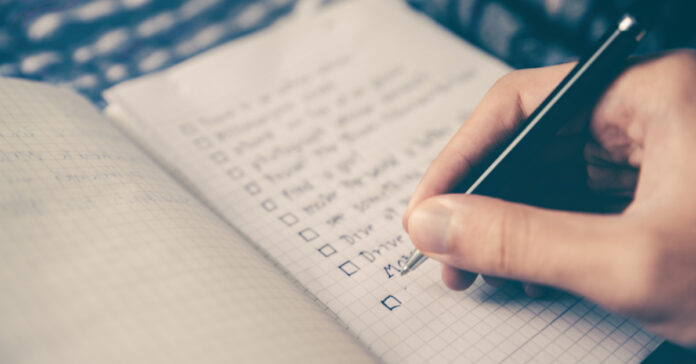When we think about prepping, we focus on food, water and shelter. Those are physical goods that contribute to being prepared, as do weapons for self-defense, medical supplies, communication devices and other tools and gear. While physical goods are important, they are only half the equation. Planning is the other half.
One of my goals as a prepper is to be insulated from outside shocks. I want to be so well prepared and self-sufficient that no matter what happens, very little in my daily life changes. To achieve this, you need to have preps and a plan. If you have one but not the other, you won’t survive for long. While we can all stockpile preps, being prepared for specific dangers requires more advance prepping.
If you have reached a good basic level of preparedness, then it is time to look beyond physical preps.
Planning for External Dangers
Just as it is impossible to have sufficient physical supplies to last forever, it is impossible to be completely protected from every external threat. Our job as preppers is to predict what can go wrong (the external threat), assess its likelihood, and determine how to best mitigate it.
Why do we assess the likelihood? Because we want to prepare for things that are most likely to happen. For example, if you are preparing for a flood, you don’t need a gas mask or potassium iodate, which you might want if preparing for a nuclear explosion or power plant meltdown. If you are preparing to survive a forest fire, your needs are far different from what you will need for an EMP. While your basic preps should be useful in any disaster, your planning will take you beyond those basics and allow you to prepare for a number of specific scenarios. That, in turn, will lead you to the next level or preparing where you buy disaster-specific preps.
At the top of my list are weather and earth events that have occurred before in our area, because they are likely to happen again. Depending on where you live, this can include floods, earthquakes, tornadoes, hurricanes, blizzards, ice storms, drought, etc.
Manmade disasters that might occur near me are next on the list. For example, I am about 200 miles from the nearest nuclear power plant, so I’m not too worried about a meltdown. If it was 25 miles away, it would be near the top of my list. If you live close to highways or rail lines, keep in mind that a truck accident or train derailment could lead to spilling hazardous materials. Just because there isn’t a chemical plant near you doesn’t mean you are free from chemical leaks.
What NOT to Prepare For
Every prepper’s scenario is different, so what you choose to prepare for is up to you. I don’t focus on large global catastrophes that I cannot do anything about, such as a large asteroid or comet striking earth. If an asteroid hits in my general area, nothing I can do (except leave the area beforehand) will allow me to survive. If the asteroid hits in Asia or South America, my standard level of preparedness should help me survive the massive repercussions of strike like the asteroid believed to have killed the dinosaurs. There is no “asteroid protection kit” I can build specifically for that diaster.
In short, strive to identify and prepare for disasters you can survive that have a high probability of occurring during your lifetime. Don’t waste time, energy, and resources preparing for disaster that come from science fiction movies and are unlikely to occur. There are plenty of actual threats.
The Population Threat
I believe the biggest threat before a disaster, possibly during a one, and definitely afterwards, is other people. This is one reason I moved to a remote area. Our county has fewer than 100 people per square mile. For comparison, the closest cities are between 2,000 and 3,000 people per square mile, while New York City has 27,0000 people per square mile.
Higher population density means more criminals near you, more traffic, more pathways for infectious disease to breed and spread, higher pressure on limited resources, and greater impact on the environment. Post disaster, higher population density means more people to rescue and mouths to feed, more dead to collect and bury, more bodies and feces to contaminate water sources, less game to hunt, and larger and more violent mobs.
Let’s face it, the number of people who appear to be uncaring, self-centered, stupid idiots who don’t know right from wrong seems to be growing. I don’t need them injecting themselves into my life before a disaster and they will be worse after one. I predict large die-offs after a large-scale disaster, with many of the dead being in urban areas with high population density.
Outside of the impossible task of avoiding people entirely, the best way to mitigate their threat is to become part of a community. That way, if it ever comes to an “us versus them” scenario, you are part of “us.”
Therefore, I believe it is important for hardcore preppers to move away from cities well before a crisis or to bug out to stay with someone in a small rural community who is already an “us” and can help you become part of that community. Just be sure you get there before they set up roadblocks to keep out interlopers.







